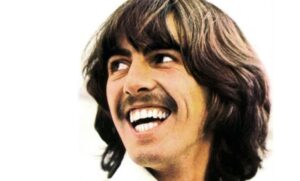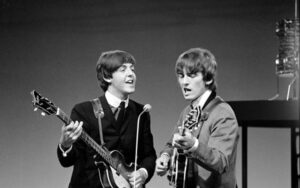It was a landmark cultural occasion when The Beatles, cleaner than clean icons, started speaking openly about their penchant for the psychedelic drug LSD. The mind-bending drug had only just become somewhat common as a recreational party enhancer during the mid-sixties and, when John Lennon and George Harrison took their first hit under the tutelage of the ‘Demon Dentist’ John Riley in 1965, they would create some of the most delectable work of their career — but the love affair didn’t last forever.
Although the drug is credited as aiding their creative process endlessly, on top of being a pretty fun way to pass the time, George Harrison was always careful with his attitude toward drugs use. He decided one day that enough was enough and put his LSD fuelled trips behind him. Whilst acid helped play a pivotal role in opening up their minds and gifting the world, Sgt. Pepper’s Lonely Hearts Club Band, George Harrison was never reliant on the exploration. He used LSD wisely to his advantage and gave it up before it graduated from an enjoyable, recreational habit to a dependency.
The Beatles, as a band, decreased their use of the drug following 1967’s ‘Summer of Love’, The Fab Four publically denouncing LSD on 26th August when they pledged their belief in Maharishi Mahesh Yogi’s system of Transcendental Meditation instead. It was only three weeks before this denunciation that Harrison had his epiphany. In it, the guitarist realised that he no longer had any desire to take the drug whilst in San Francisco at the hippy infested, Haight-Ashbury. One bad trip was enough to make Harrison question if this is what he wanted to be doing with his life.
“I could see all the spotty youths, but I was seeing them from a twisted angle,” Harrison recalled in Anthology. “It was like the manifestation of a scene from an Hieronymus Bosch painting, getting bigger and bigger, fish with heads, faces like vacuum cleaners coming out of shop doorways. They were handing me things – like a big Indian pipe with feathers on it, and books and incense – and trying to give me drugs. I remember saying to one guy: ‘No thanks, I don’t want it.’ And then I heard his whining voice saying, ‘Hey, man – you put me down.’ It was terrible. We walked quicker and quicker through the park and in the end, we jumped in the limo, said, ‘Let’s get out of here,’ and drove back to the airport.”
He continued: “That was the turning point for me – that’s when I went right off the whole drug cult and stopped taking the dreaded lysergic acid. I had some in a little bottle – it was liquid. I put it under a microscope, and it looked like bits of old rope. I thought that I couldn’t put that into my brain any more.”
The Beatles guitarist saw how the drug had deviated over the last couple of years, and a culture had span out of it, one which he had no interest in being a part of anymore. He saw the people in San Francisco who treated LSD like religion and couldn’t bring himself to be associated with the world of psychedelics any longer.
After all The Beatles had already created, Sgt. Pepper’s Lonely Hearts Club Band and the trippy Magical Mystery Tour, it was time to mix things up once again by creating The White Album, a record which wouldn’t have existed if it wasn’t for The Beatles trying to get away from the last couple of years of their career by shuffling the pack once again.
It wasn’t just the people associated with LSD that had made Harrison grow tired of it, he’d also noticed a significant change in the drug itself. “People were making concoctions that were really wicked,” Harrison added in Anthology. “Ten times stronger than LSD. STP was one; it took its name from the fuel additive used in Indy-car racing.
“Mama Cass Elliot phoned us up and said, ‘Watch out, there’s this new one going round called STP.’ I never took it. They concocted weird mixtures, and the people in Haight-Ashbury got really fucked-up. It made me realise: ‘This is not it.’ And that’s when I really went for the meditation.”
That day in San Francisco gifted Harrison with an epiphany and made him realise that whilst LSD provided him with experiences that he once greatly enjoyed, he was over it. Most significantly, this shines a light onto Harrison’s well-balanced personality and how he could stop taking LSD at the drop of a hat, unlike John Lennon who would carry on taking the drug albeit less-often than he once did.



